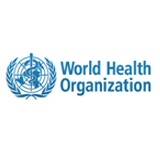
The need for accelerating progress towards the Millennium Development Goals (MDGs) 4 and 5 has increasingly been of concern to the international community as recognized within the recent Global Strategy for Women’s and Children’s Health launched by the United Nations Secretary-General in
September 2010 (1). A related condition, stillbirths, although not included in MDG tracking, are related to maternal mortality and with the care received during pregnancy and delivery (2). Improved data on pregnancy outcomes including stillbirths are crucial to guiding programmes and investment towards
progress in achieving the MDGs.
In 2006, the first two sets of global, regional and country-specific stillbirth rates were published – one by the World Health Organization (WHO) ( 3 ) and one by Saving Newborn Lives/Initiative for Maternal Mortality Programme Assessment (IMMPACT) (4). These exercises generated estimates of just over 3 million stillbirths – 3.3 million and 3.2 million (with wide uncertainty: 2.5–4.1 million), respectively, for the year 2000.
WHO and partners undertook an updated analysis of national, regional, and worldwide stillbirth rates estimates and numbers for 193 WHO Member States for 2009 and trends since 1995. This analysis used the definition of stillbirths as late fetal deaths weighing at least 1000 grams or occurring at or beyond 28 weeks gestation (5).